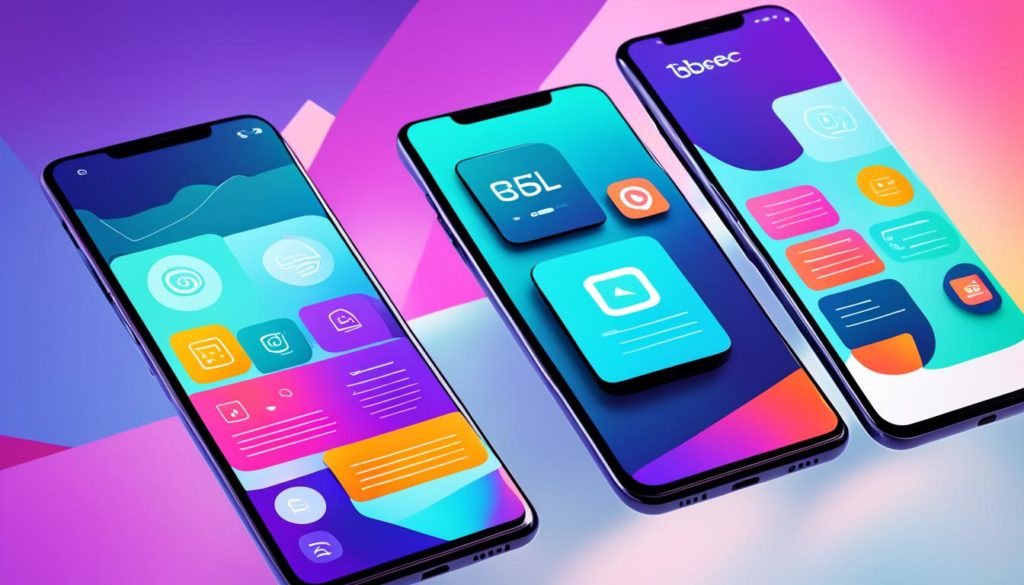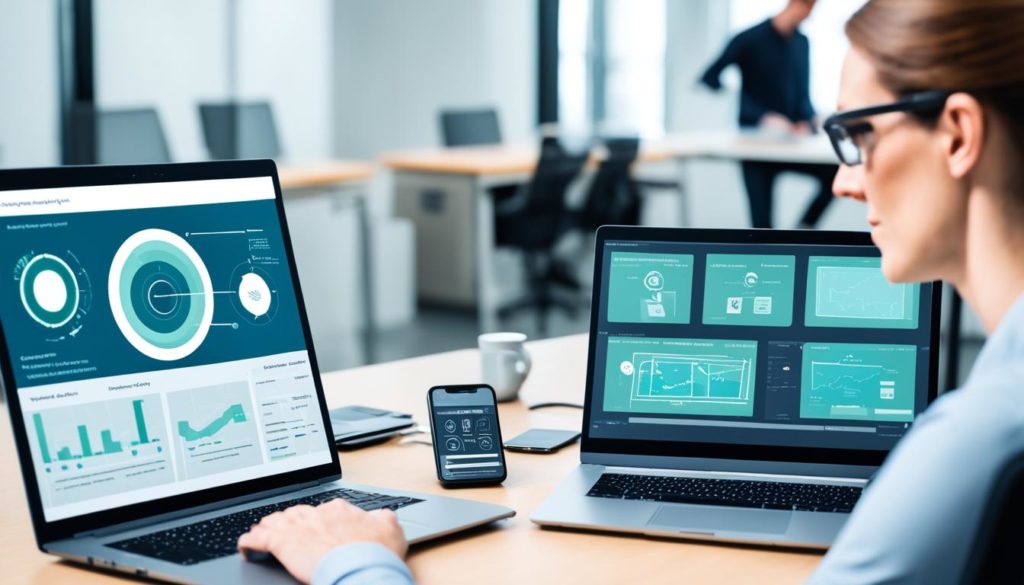
Did you know surveys are great for collecting info from many different people? They show us the wide use of UX research methods. These methods range from simple surveys and A/B testing to detailed ones like journey mapping and eye tracking.
We pick the best method based on what we need to know and what we have. For example, usability testing shows if tasks are done easily. Meanwhile, user interviews let us hear directly from users.
Using several methods together gives us a fuller picture of what users need. Focus groups and field studies help make designs that people love. They give us the tools to focus on users in our designs.
Key Takeaways
- Surveys gather data from a large and diverse audience efficiently.
- Usability testing helps measure user task completion and identifies issues.
- User interviews provide qualitative insights into individual experiences.
- Combining various user experience research techniques yields comprehensive insights.
- Choosing the right research method depends on the project’s stage, objectives, and resources.
Exploring these methods shows us how to better understand and enhance user experience. For an in-depth look at UX research methods, check out this guide on UX research methods.
Enhancing Usability with Usability Testing
Usability testing is key in UX research. It shows how users interact with a product and spots usability problems. This method makes sure users have a smooth experience. It leads to better user happiness and smart design changes.
What is Usability Testing?
Usability testing watches real users as they use a product. It shows how they act, what they find hard, and more. Using tools like heuristic evaluation, we get both numbers and stories. This gives us feedback to make user experiences better.
Benefits of Usability Testing
Usability testing gives clear tips for design. By seeing how users handle our product, we can fix problems early. It makes customers happier and keeps them coming back. That’s because we build a product that meets their needs well.
Conducting Effective Usability Tests
To do usability tests right, you need a good plan. Here are the main steps:
- Find a good mix of people from your audience.
- Make tasks that mirror real life for users.
- Use tools like usability testing tools to get full data.
- Combine user talks and surveys to get all kinds of insights.
We must also keep an eye on changes through analytics tools. By doing usability tests often, we make sure our updates truly make the user experience better.
Understanding User Preferences with Surveys and Card Sorting
To better understand what users like, we use surveys and card sorting. These methods help us see how people view and use our products. With this info, we can make our designs easier to use and more appealing.
Effective Use of Surveys
Surveys are a key tool for us. They let us collect wide-ranging data, focusing on specific demographics like age or gender. This way, we get a big picture of what users want and do. They’re affordable and reach many people quickly. Using a mix of question types, we really get to the bottom of what users need. This feeds into making better design choices. To see more on research methods in UX, check this link.
- Quantitative Data: Through surveys, we track user satisfaction and spot trends.
- Demographic Targeting: Specific surveys help us understand different user groups, leading to tailored designs.
Adding these findings to other research like usability tests boosts our understanding of what users prefer. We use this knowledge to design in a way that speaks to our audience.
Card Sorting Techniques
Card sorting sheds light on how users organize info. It’s especially useful for setting up a website’s or app’s structure. By having users group items, we see into their thinking and learn how they expect content to be arranged. You can read more on this at card sorting studies.
We have open and closed card sorting methods. Open lets participants make their own categories, showing us their thought patterns. Closed card sorting uses set categories to check if our content structure works. Tools like Optimal Sort let us do this from afar, making it easier to get rich insights.
- Open Card Sorting: Here, users form categories, offering a peek into how they think.
- Closed Card Sorting: In this method, users put information into given categories which helps confirm our content layout is logical.
Through these techniques, we tweak our designs to match user expectations better. This makes our content easier to find and use. For a detailed look at UX research methods, visit this link.
| Research Method | Insights Provided | Recommended For |
|---|---|---|
| Surveys | Quantitative data on user preferences and demographics | All stages of a project |
| Card Sorting | Understanding user mental models for information categorization | Start of a project |
Conclusion
UX research methods are key for creating designs that meet user needs. Through user interviews, we discover what our users truly need and what troubles them. Usability testing then lets us see how users interact with our designs, pointing out what we need to fix.
Surveys and card sorting help us get to know user preferences better. This way, we can make choices in our design process that are backed by data. By using these techniques together, we make sure our designs are both useful and enjoyable.
Adopting UX research methods leads to better products. The insights we gain help us make products that users love. By using these techniques, we build a stronger bond with our users, making them happy and loyal. Let’s keep using these methods to improve usability and create lasting experiences.
FAQ
What are the main user experience research techniques?
UX research includes methods like usability testing and user interviews. Surveys, card sorting, and heuristic evaluation are also used. Eye tracking and A/B testing provide additional insights into user preferences.
Q: What is usability testing?
Usability testing watches real users interact with a product. This helps find problems and improve satisfaction. It’s a key way to learn if a product meets user needs.
What are the benefits of usability testing?
Usability testing makes users happier and finds issues. It offers insights for design changes. We also learn unexpected things about user behavior.
How do you conduct effective usability tests?
Good usability tests have clear goals and involve the product’s audience. By watching users, researchers gather feedback to make products better. Tools and heuristic evaluations help get deeper insights.
How can surveys be used effectively in UX research?
Surveys are an affordable way to get data fast from many users. They can ask both open and specific questions. Surveys are great before and after launching a product.
What are card sorting techniques, and how are they used?
Card sorting helps understand how users think about content. Users group content cards in a way that makes sense to them. This helps create easy-to-use interfaces and better information structures.
Future App Studios is an award-winning software development & outsourcing company. Our team of experts is ready to craft the solution your company needs.










